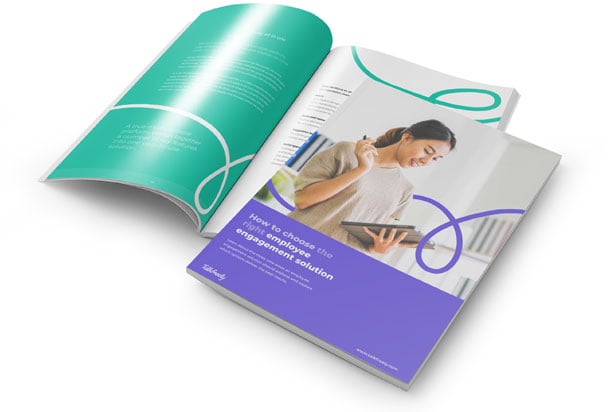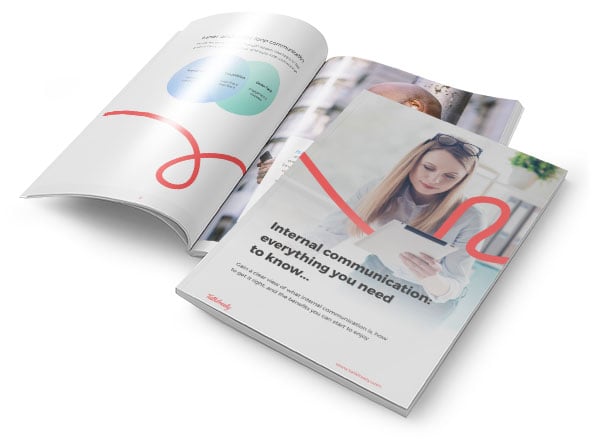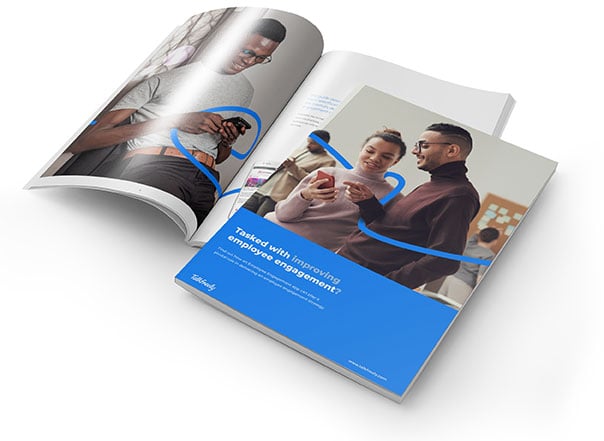It’s no secret that employee engagement is the key to a successful organisation. After all, your employees are the most important assets you have. And engaged employees deliver on all fronts. They are more productive and efficient, offer better customer service, stay longer in their roles, and deliver higher profits. On the other side of the coin, recent Gallup research estimates that low employee engagement costs the global economy over $8 trillion per year.
In this blog, we explore the seven critical components of employee engagement. We explore why they are so important, and how you can implement them into your overall strategy to get the best results.
#1 Communicate with absolute clarity
Why?
Because clear, transparent communication is at the heart of all employee engagement strategies. Company directors make new decisions on a regular basis, and these decisions will have a direct or indirect impact on their employees. Unless you clearly communicate your plans to your workforce, you can’t expect them to get behind your decisions and make them work in practice. Your employees need to understand the what, and the why.
How?
You need to make sure that you’re not assuming implied knowledge. Is your messaging clear enough for everyone to understand, even the intern who joined on Monday? This is why communications specialists are a crucial element of your employee engagement model. You need people in place who can craft a clear, concise message. You also need to deliver that message in the right way, which takes us on to the next component of employee engagement.
#2 Use the right communication channels
Why?
Because how you deliver your message is almost as important as what you say. Send your message as an email, and it runs the risk of getting lost in the daily deluge. Research reveals that the average person sends and receives 121 business emails per day. It’s not surprising that every message doesn’t make it through. Equally, if you have an urgent communication that needs immediate action, you need to select a channel up to the task.
How?
People respond best when they make their own choices. This is where an employee engagement app comes into its own. It will allow employees to receive messaging on whichever hardware or software platform they prefer. An app can also deliver instant notifications effortlessly, ensuring everyone in your company receives the right message at the right moment.
#3 Always ask for feedback
Why?
Because internal communication should never be a one-way street. Yes, it’s important to pass on the messaging from the top down, but there should also be a channel in place to allow communication back up to the top. Enabling the employee voice is one of the key components of employee engagement. Once you give your workforce an opportunity to speak out and be heard, you’ll find engagement levels start to rise.
How?
It’s vital to build regular surveys and polls into your employee engagement activities. Employees will almost always take the time to share their opinions and ideas. The easiest way to implement a feedback schedule is via an employee engagement platform. It has ready-made modules that will allow you to create everything from simple polls to advanced logic employee surveys.
#4 And then act on the results
Why?
Because there's nothing worse than conducting an in-depth employee engagement survey, only to ignore the results. You’ll see motivation levels plummet if employees feel their opinions are being side-lined. One of the key employee engagement best practices is to follow through on feedback with tangible, timely action. Even if a request can’t be accommodated, it still requires acknowledgement.
How?
You need to link your feedback requests to a workflow that follows up with action points. These actions should then be communicated to the employee base, without delay. An employee app will have idea management workflow systems, already set up and ready to go. It will ensure that those great ideas and suggestions don’t fall into a black hole. They’ll be put into practice, building a company ethos of innovation and improvement.
#5 Recognise and celebrate success
Why?
Because praise is so much more effective when it’s made public. Public recognition isn’t just motivational for the recipient. It’s also beneficial for the company as a whole; employees will see their colleagues being praised and realise that success is worth aiming for. A crucial element of employee engagement and retention, employees who feel appreciated will work harder, and stay with the company longer.
How?
Your aim should be to create a positive culture of recognition and appreciation. Help employees celebrate success by providing a social platform that encourages peer-to-peer recognition as well as praise from management. An employee engagement platform has modules that allow you to recognise success within departments, teams or across the company, using social tools such as likes and comments to drive interaction.
#6 Place leaders in the spotlight
Why?
Because your leaders are responsible for setting the tone of the whole company. They guide the ethos, culture and direction of the organisation. As critical components of employee engagement, your leaders need to be highly visible and accessible. This has become even more relevant in the hybrid working environment, where remote employees can feel increasingly distanced from the decision-making hub, that is the leadership team.
How?
Make sure your leaders are seen in person. Whether that’s on a stage at a conference, at a town hall meeting or via a video message. However you achieve it, put them in front of their employees, speaking on a level everyone can connect with. It will create that all-important sense of belonging. People look to the CEO to set the direction of the company. So put them in front of the camera or on the stage and get them talking.
#7 Measure the impact of your messaging
Why?
Because unless you are monitoring your communications, you will have no idea if they are actually working. Too many employee engagement initiatives fail to connect. This can be avoided if you track the impact of your messaging from day one. You need to know who has read your message, and who hasn’t. Who has acted on the information, and who has ignored it. Only then can you adjust your strategy to ensure you’re connecting successfully.
How?
How to measure employee engagement? An employee engagement platform will offer in-depth reporting, without the need for extra analysis tools. In-built dashboard and reporting will allow you to monitor the ongoing engagement levels you are achieving with your current strategy. It will deliver regular and scheduled check-ups to ensure you’re on top of your game. This crucial element is often overlooked but is one of the most critical components of employee engagement.









